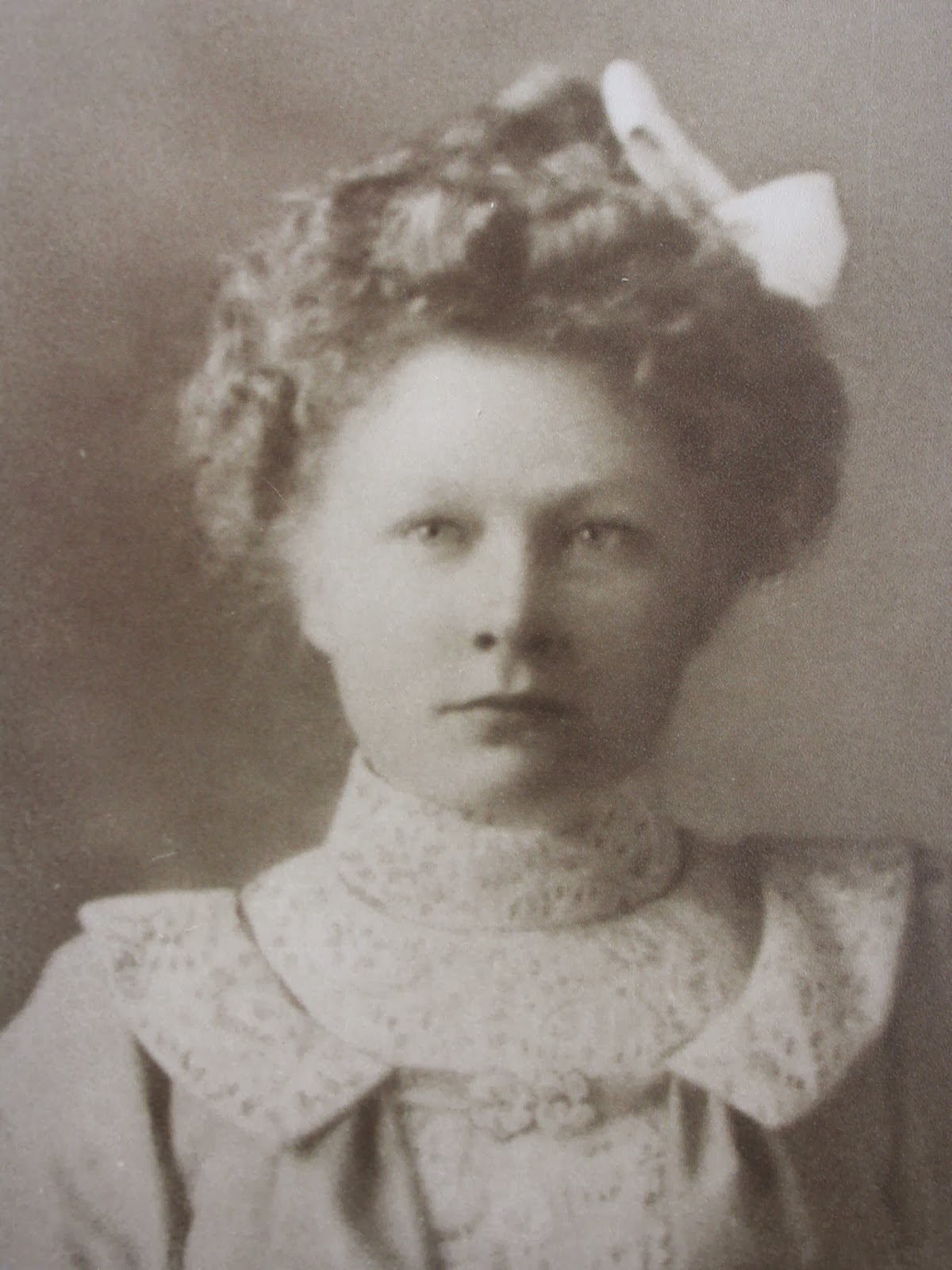The 1:st letter as it was when sent to me by Jim.
Elva and Leila have written about growing up in North
Dakota.
Elva's first account is titled, "Getting to
School."
When the Hendrickson children were old enough to go
to school, the only
school available was a small rural school.
Fortunately, the Posey family
had moved near-by with several children. The
Posey boys were older than
Agnes and Nora so they drove some sort of horse
driven vehicle to and from
school every day. As Arnold and Henry were
ready to start school, they too
would ride with them. The two boys spoke only
Swedish at first, as it was
spoken at home by our parents.
When the Glenfield Consolidated School was built
about 1912, they could all
go there. A regular bus driver was hired to
transport children from their
homes to school every school day. School
started at 9 AM and was over at 4
PM. Busses had regular routes to follow,
sometimes starting very early to
drive the enclosed horse-driven busses to get there
on time. The busses
were on wheels except in winter when there was lots
of snow - when runners
were used. A little round stove in the center
would heat the bus in cold
weather, and the bus driver sat inside the
front of the bus with a necessary window
to drive safely. There were 2 little windows in
the back,
one on each side of the aisle for the use of the
students.
Elva's second story is titled, "Transportation."
Having been born in 1912, I am not qualified to speak
about the methods of
transportation by the Hendrickson family before that
time. However, I
presume it was with horses.
Up until Glenfield, North Dakota, was built in 1912,
trips had to be made to
Cooperstown to get some food and supplies by horse
and wagon. I remember,
however, riding the 3.5 miles to Glenfield in a one
seated buggy, driven by
our horse, Julia. We could sit 3 abreast quite
comfortably with room in
back for butter, eggs, and later, a cream can to sell
in exchange for
groceries etc. On a pleasant day, it was an
enjoyable trip. Julia was a
favorite and dependable horse to drive. Leila
and I would have Mother do
the driving, but I think we kids would later go alone
to get groceries and
maybe a sack of "hard" coal for our kichen
cook stove during the summer.
In the snowy winter, a sleigh driven by a pair of
horses was used. When we
went to spend Christmas with the Herman Johnson
family, we would dress
warmly and have quilts and put straw on the floor of
the wagon, and we would
drive cross country the 5 miles or so.
The first automobile that Mother bought was a
Briscoe, an open car with side
curtains to put on in bad weather. At first she
drove it, but Hank and
Arnold drove as soon as they were old enough.
Now we could ride to
Glenfield on Saturday nights, to Juanita Lake to
fish, and to Cooperstown to
the Fair every summer.
 |
| Elva's husband Fred Silliman and possibly a car mentioned. |
Later, Mother bought a four door Ford sedan. I
remember driving it. We
enjoyed that car for several years. When Henry
finished high school and got
his first job as a mail carrier, the sedan was sold
and he bought a Model A
Ford which also served as a family car as necessary.
Leila wrote about Food:
After John's death, Josie was busy meeting the needs
of her family of six.
One of the most important of those needs was, of
course, food. She bought
some of the food products such as flour and sugar and
other things at the
grocery store, and her sale of cream, butter, and
eggs paid for these.
Incidentally, it is remembered that the year's
grocery bill at the store in
the fall of one year was sixty-nine dollars!
A garden was the source of a large portion of the
food supply needed. The
Hendrickson garden covered about one acre, quite near
the house, well, and
windmill, which would be the source of water for the
garden in dry years.
The garden was planted by Josie and later her family
joined in the care of
it. She raised a large variety of vegetables
which in the fall of the year
were stored in the dirt cellar. This was
entered by a stairway from the
outside of the house. There was also a small
area in the bedroom here one
could lift a small trap door and go down a ladder to
the cellar.
Along one side of the cellar was a large bin where
the year's supply of
potatoes was kept. Above this were shelves for
dozens of glass jars of
canned corn, beans, peas, a large crock of carrots
buried in sand, and a
large crock of sour-kraut made from cabbage.
Other than the canned
vegetables, there were also many jars of meat such as
beef, chicken, and
pickled pig's feet. Some jars were of
choke-cherry jelly or juice. The
choke-cherries were picked each fall at the trees by
the Sheyenne River near
Cooperstown.
Elva and Leila plan to write more before they leave
for home on December
10th.





















